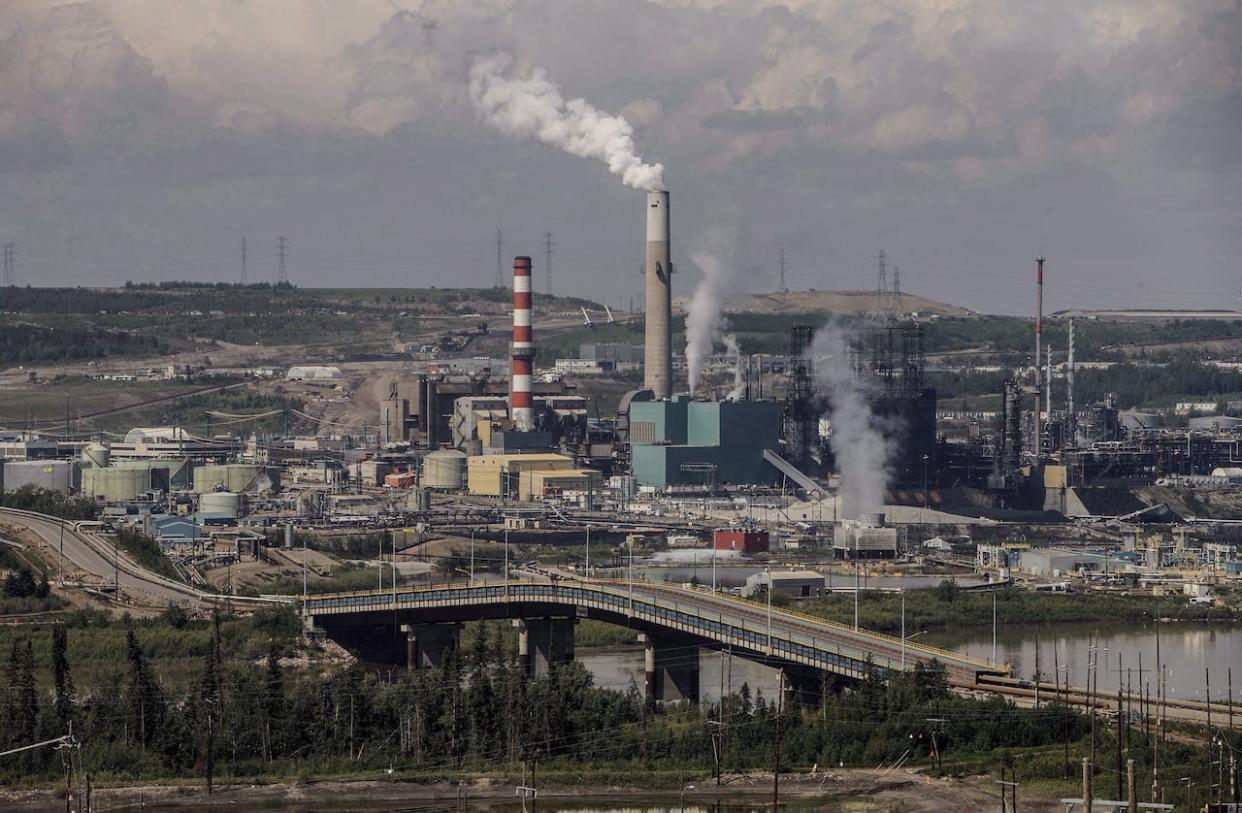Liberal government unveils framework to cap oil and gas emissions at 35% to 38% below 2019 levels

The Liberal government announced its regulatory framework for capping emissions in the oil and gas sector Thursday, unveiling a national cap-and-trade system that it says will set emissions limits without restricting production.
"The Government of Canada's plan to cap and reduce emissions from Canada's largest emitting sector is ambitious, but practical. It considers the global demand for oil and gas — and the importance of the sector in Canada's economy — and sets a limit that is strict, but achievable," Environment Minister Steve Guilbeault said in a statement.
The framework proposes to cap 2030 emissions at 35 to 38 per cent below 2019 levels in order to reach the government's goal of reducing emissions in the sector to net zero by 2050. The oil and gas sector is responsible for 28 per cent of Canada's emissions.
The government said it is publishing the framework now to give time for industry and others to provide input on the forthcoming draft regulations, which it says it will publish in mid-2024.
The sub-sectors of the oil and gas sector that will be impacted by the framework include liquified natural gas producers, conventional and offshore oil producers, oil sands producers and natural gas processors. Refineries are not covered because they fall under clean fuel regulations.
Under the framework, oil and gas facilities will be given an allowance for each tonne of carbon they emit, with fewer allowances being given out over time.
To comply with the framework, facilities either have to reduce their emissions or buy allowances from other facilities that have reduced their emissions.
The government says the cap-and-trade system it plans to implement will only result in emissions reductions of about 20 to 23 per cent below 2019 emission levels, while allowing industry to increase production 12 per cent above 2019 levels.
To get to the stated goal of reducing emissions 35 to 38 per cent below 2019 levels, the sector will be allowed to use offset credits or pay into a decarbonization fund that will invest in future greenhouse gas emissions reductions.
The government says the framework has been designed to work with other emissions-reduction policies, including methane regulations and carbon pricing. That means emissions reductions in the oil and gas sector will count toward obligations under multiple government policies.
Lower than expected targets
The limits are not as low as the original 2030 target of reducing emissions in the sector by 42 per cent below 2019 levels. One source told CBC News that the government set lower targets in order to avoid legal and constitutional fights with provinces.
Last week, Guilbeault said two recent court decisions forcing Ottawa to tread more carefully on climate policy affecting provinces pushed the federal government to reconsider its emissions cap plan.
The first was a Supreme Court decision that said a federal law governing environmental impact assessments stepped into provincial jurisdiction by applying to some projects that should have been outside of Ottawa's control.
The second was a Federal Court decision that struck down Environment Canada's designation of all plastic manufactured items as "toxic." The court said the category of plastic manufactured items was too broad for a single designation. The decision also touched on federal-provincial distribution of powers.
Saskatchewan, Alberta weigh in
Alberta Premier Danielle Smith issued a statement Thursday describing the framework as an "intentional attack by the federal government on the economy of Alberta and the financial well-being of millions of Albertans and Canadians."
Smith says Alberta owns its resources and under the constitution has the exclusive jurisdiction to develop and manage them.
"Justin Trudeau and his eco-extremist Minister of the Environment and Climate Change, Steven Guilbeault, are risking hundreds of billions of investments in Alberta's and Canada's economy," she said.
Saskatchewan Premier Scott Moe said the emissions reductions contained in the framework will burden the oil and gas sector "with more red tape and regulations."
"These new federal policies will have serious economic impacts on Canadians and limit our sustainable Canadian energy products from providing heat and electricity to the world," he said in a statement.
Moe said he remains opposed to an oil and gas emissions cap, saying his government "will protect our constitutional right to build our economy in accordance with the priorities of Saskatchewan families and businesses."
Environmentalists weigh in
Rick Smith, president of the Canadian Climate Institute, described the framework as a "sensible approach" but criticized the government's timeline, saying "there's no need to push off implementation to 2026 or later."
"The approach to capping oil and gas emissions announced today is reasonable and necessary," he said. "These regulations should be finalized and implemented without further delay."
Caroline Brouillette, executive director of Climate Action Network Canada, welcomed the framework, saying it is an example of backing "diplomacy with domestic action."
"Now, we must double down to ensure that draft regulations are tabled by February and that the oil and gas industry finally does its fair share of the national climate effort," she said.
The Pembina Institute also welcomed the cap, describing it as "responsible and realistic."
"The regulatory framework released today is an important step toward meaningful reductions in emissions from the oil and gas sector," said the institute's Janetta McKenzie.
NDP environment critic Laurel Collins, however, said the framework misses the mark and panders to the oil and gas sector's CEOs.
"At a time when people expect the government to take on the climate crisis, the Liberals instead have listened to oil and gas lobbyists, giving them an oil and gas emission cap framework that's low, riddled with loopholes and won't put Canada back on the right path for meeting our emission targets," she said.


